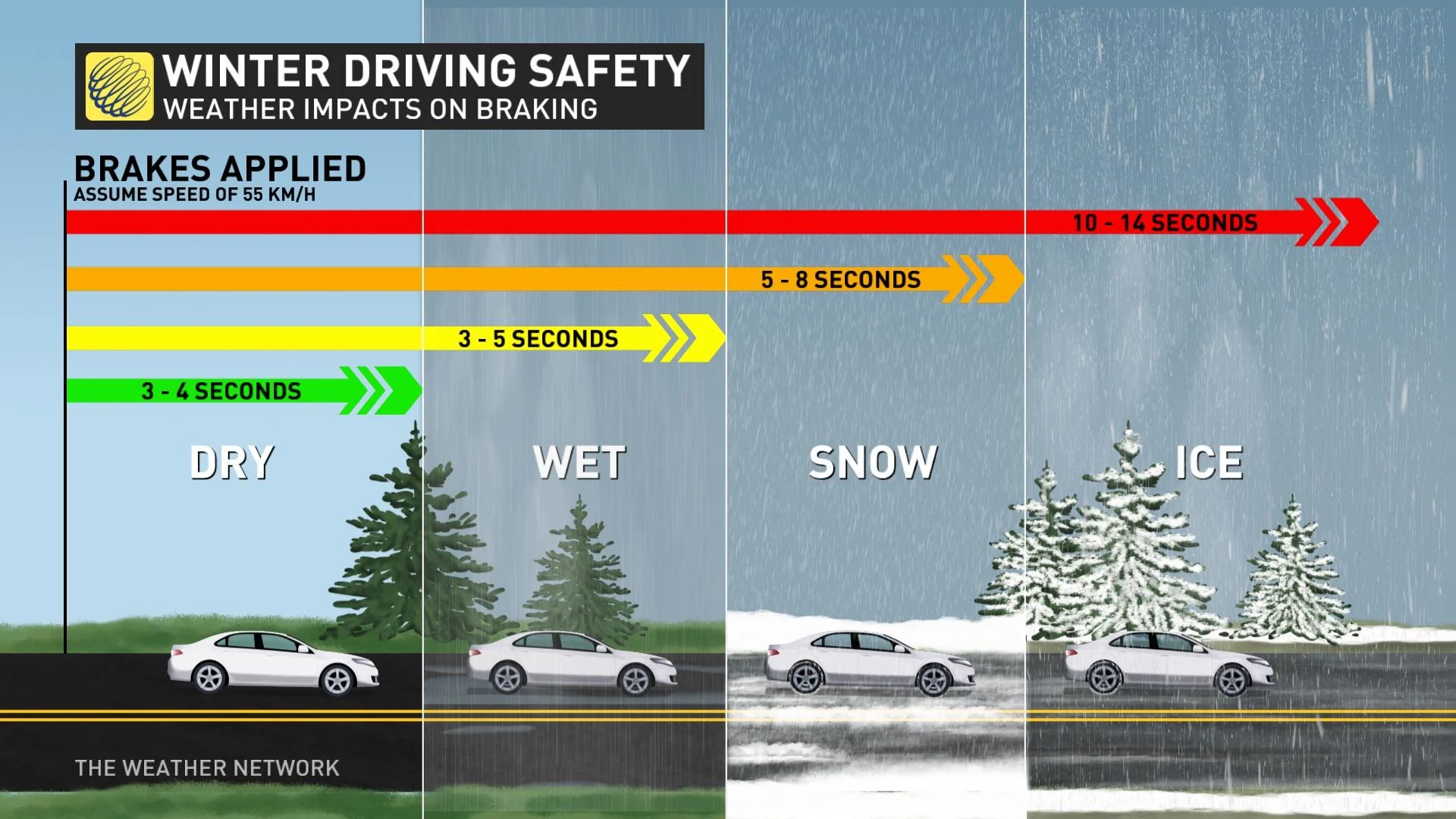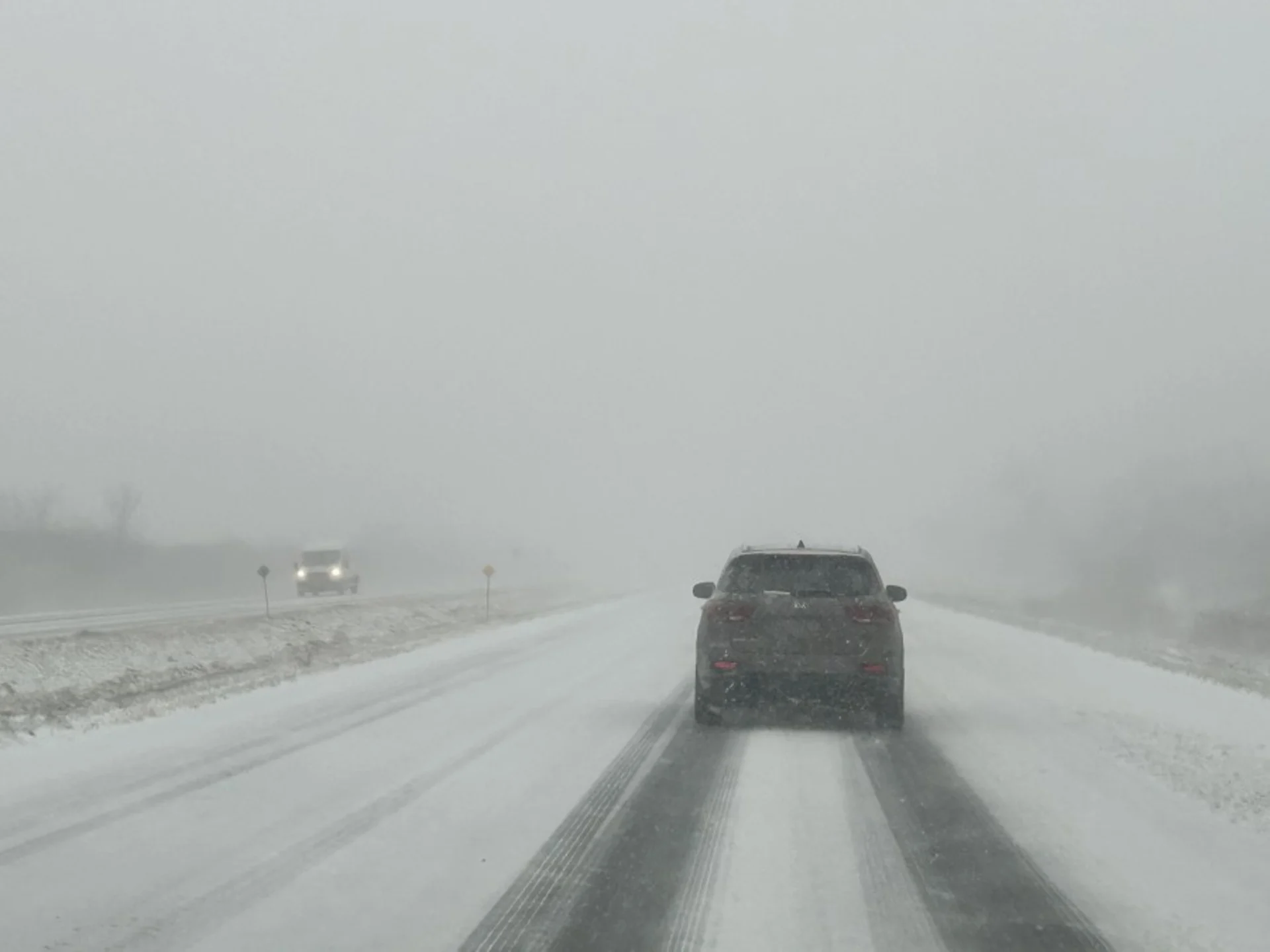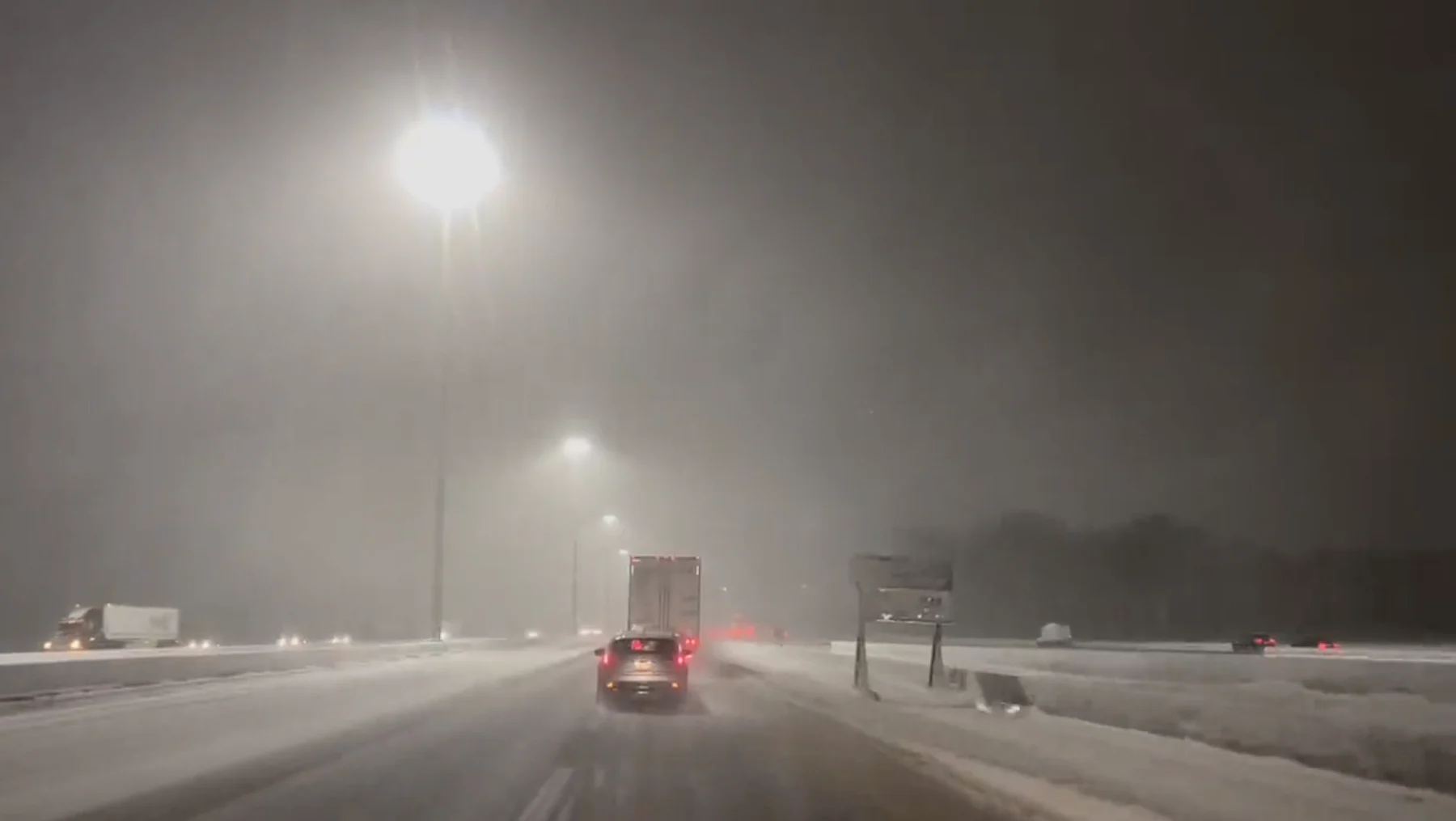
'Common sense' driving tips to help steer through Canada's winter
Whether it's snow, rain, ice or anything else Mother Nature can dish out during the winter, the Young Drivers of Canada offer 10 safety tips that can help motorists navigate the difficult road conditions that often occur during the season
Winter can be a season full of surprises in Canada, but driving through stormy weather shouldn't be one of them.
Despite our annual dose of harsh winter conditions, many drivers aren't prepared for travelling in them, so the Young Drivers of Canada has a top-10 list of safety tips for anyone caught off guard by the cold season.
“Getting ready for the winter season shouldn't be a surprise or something that you need to prepare for in Canada," said Maria Bagdonas, operations manager with Young Drivers of Canada, in a recent interview with The Weather Network. "We live here, we expect it to be winter."
“A lot of it is common sense, but they do say 'common sense isn't so common sensible anymore,'" she added.

SEE ALSO: Why the first snowfall of the season can catch drivers by surprise
Don't let your guard down
Because the first snowfall of the season can get delayed compared to some years, it can catch many drivers off guard when this happens, Bagdonas said.
"People didn't have their winter tires. They hadn't made the selection of their winter tires. Once Nov. 1 rolls around, we should be starting to think about what we need to get done and when we need to get it done by," said Bagdonas.
And we need to stay road-ready throughout the season, even when winter weather hits the pause button temporarily.

(Mark Robinson/The Weather Network)
"It's very easy when we have a January like we did [in 2023] at the beginning to just say, 'well, that's it. winter is done. You know, I don't have to worry about it,'" said Bagdonas.
Drivers have different levels of experience and comfort level
One of the important things to remember is that motorists have different levels of driving experience and comfort on the roads, so people need to be patient while behind the wheel, especially in the winter.
“You have no idea what the experience level is of the driver that's behind the wheel. They may be going very, very slow because this is their first time driving in a snowstorm," said Bagdonas. "There's no point in crowding them. All that really does is raise the anxiety level in the car that's in front of you. Everybody needs to coexist."

(Mark Robinson/The Weather Network)
She said drivers need to have an idea of how their car is going to "behave" on slick roads during the winter. This is why it's important to leave extra space between the car in front of you, as this acts like a "buffer zone" should something go awry.
"There are probably drivers out there [that] don't have any idea of how their car is going to stop on the surface that they're driving on," said Bagdonas. "You need to have traction in order to go, stop or turn. And if you don't have traction or grip, then it doesn't really matter the kind of tire that you have on your car."
As drivers, there are things we can do to maximize our traction, Bagdonas said, including accelerating gently and braking early.
"We want to keep the weight balance of the car as even as possible over all four of the tires. There's always a weight shift when you stop, steer or brake, but you want to minimize that as much as possible and let the tires do their job," said Bagdonas.
WATCH: When (and how) to get your car ready for winter
Top 10 safety tips
Courtesy of the Young Drivers of Canada, here are 10 items you should follow before heading out on the roads and during your travel.
Check the road conditions before you head out. Provide yourself with extra time for the winter commute. Being under time constraints can result in driver error when negotiating slippery roads, resulting in a potential collision.
Avoid driving in bad weather. If you need to drive, ensure your vehicle is full of fuel and plan ahead. Top up the windshield fluid, ensure the wipers clear your windshield and remove any accumulated snow on your vehicle, including the roof and lights.
Plan your route. Let others know your route and the expected travel time, especially when driving a long distance.
“It's more of a mindset than anything else, right? Providing yourself with that little bit of extra time in the morning to do some of the extra things that you might need to do," said Bagdonas.
Stick to the main roads. Major roadways are usually plowed and salted first in comparison to rural or side roads. Drivers should always drive according to road conditions. Avoid sudden acceleration or deceleration. Remember that all vehicles react differently on snowy and icy road surfaces.
Leave space. Not every driver can react to slippery or icy road conditions in a safe manner. Drivers are encouraged to leave enough space to react to sudden changes in traffic and be able to plan an escape route, in the event of a skidding vehicle or sudden braking by others.
"If you're driving on glare,[and] ice, your tires alone are not going to save the day," said Bagdonas.
Limit the use of cruise control. Cruise control should not be used when driving in snowy, wet or icy conditions. In the event your vehicle slides or hydroplanes on an icy or wet surface, your vehicle may try to accelerate on cruise control, which could cause a driver to lose control.

(Mark Robinson/The Weather Network)
Install winter tires. Winter tires should always be installed in sets of four. Tests have confirmed that winter tires provide better traction on cold and icy road surfaces. While other types of tires harden in cold temperatures, the rubber compound of winter tires remains soft, providing vehicles with the traction required on winter roadways.
Pack a winter car survival kit. The kit should include a blanket, non-perishable foods such as energy or granola bars, a blanket, a small shovel, jumper cables, flares and a flashlight. Drivers should also ensure they are dressed for winter conditions and have a heavy coat, gloves, a hat and proper winter footwear.
Don’t panic if you get stuck. Drivers should realize that getting stuck in a storm or snowbank isn’t the end of the world. The first rule is not to panic. Drivers should avoid becoming overexerted by trying to push their vehicle out of its situation. Drivers should stay in their vehicles to avoid exposure to the elements. Running the vehicle’s motor sparingly is a good idea, but drivers must ensure the exhaust pipe is free and clear of any obstructions including snow. Leaving the window open slightly to allow for fresh air flow is necessary to keep drivers safe. Keep watch for other vehicles.
Travel with a fully charged phone. A mobile phone can let friends and family know where you are and can be used to call for help, but avoid using it while driving because it is illegal and diverts your attention from the road.
WATCH: The dangers of winter driving and how to protect yourself
Most importantly, always check the road conditions and weather forecast before you head out.
“Pack your patience when the weather is bad," said Bagdonas. “Have a preparation routine and stick to it no matter what the temperature is at that particular time.”
Thumbnail courtesy of Getty Images.
Follow Nathan Howes on Twitter.






